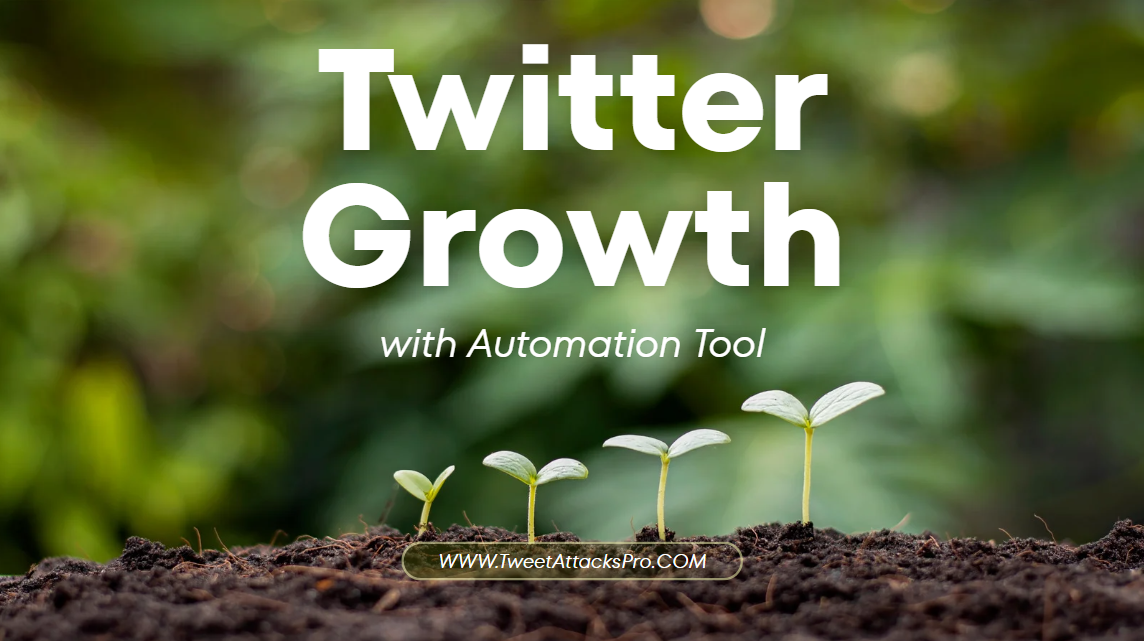How to Build a Twitter Growth Machine with Multi-Account Behavioral Simulation

In today’s Twitter landscape, success is less about who you are and more about what your accounts do. Accounts with zero followers can still drive tens of thousands of tweet impressions. The reason? Twitter doesn’t reward legacy. It rewards signals.
What most users don’t realize is that Twitter's algorithm heavily depends on behavioral signals—not your follower count or verification badge. This presents a major opportunity: if you understand how these signals work, and if you can simulate them effectively across multiple accounts, you can trigger algorithmic amplification at scale.
In this post, we’ll break down how to use a Twitter growth software system to simulate user behavior, coordinate actions across an account matrix, and build a self-sustaining Twitter growth machine.
1. Twitter’s Algorithm Cares More About Behavior Than Who You Are
If you’ve ever wondered why some tweets go viral while others barely get seen, the answer often comes down to behavioral signals on Twitter — not your follower count or profile authority.
The algorithm looks closely at how people interact with your content: how long they pause on a tweet, how far they scroll, whether they click on your profile or media, and the pattern of likes, retweets, and replies. It’s all about subtle user actions that suggest real interest.
In that sense, Twitter functions more like a recommendation system driven by behavior than by identity. It’s constantly measuring whether a tweet sparks engagement — not just who posted it.
So, if you can simulate engagement on Twitter in a way that mirrors real user behavior — such as staggered likes, natural replies, and thoughtful profile clicks — you can boost your content’s visibility dramatically. You’re not gaming the system; you’re aligning with what the algorithm already values.
2. Behave Like a Real Twitter User, Not a Bot
Most automation tools fail because they don't understand how to simulate Twitter user behavior in a way that actually looks real. They like too many tweets too fast, reply instantly, or repeat the same pattern over and over. That’s not how real people use Twitter—and the algorithm knows it.
A smart Twitter behavioral automation tool doesn’t just blast out likes and replies. It moves like a real user would: scrolling the timeline for 30–90 seconds, clicking into tweets, reading replies, maybe checking out the author’s profile, and liking only one out of every few posts. Sometimes it replies, but only after a natural delay that feels human.
To simulate Twitter user behavior effectively, your automation needs to be unpredictable—in a good way. Random time gaps, multi-step interactions, behavior trees—it’s not just “click = action,” it’s a flow. A kind of digital rhythm that tells Twitter: this looks like a real person, not a script.
3. The Power of Multi-Account Twitter Automation
If you’re worried about growing on Twitter, you’ve got to stop thinking like a single user and start thinking like a network. That’s where multi account Twitter automation really shines.
Instead of blasting the same message from one profile, you coordinate across a group of accounts. One replies to a tweet. Another likes that reply 40 minutes later. A few others retweet the original post, spaced out over a few hours. Someone follows the author, bookmarks the tweet—nothing too fast, nothing too perfect.
This kind of staggered, human-like behavior is the core of a solid Twitter engagement bot strategy. It’s not about spamming—it’s about creating a rhythm that tricks the algorithm (and real users) into thinking the content is taking off.
When you do it right—and do it consistently—your automated Twitter growth strategy starts working like a system. Not just a trick, but something sustainable.
4. Build Your Twitter Growth Machine: System Blueprint
To scale twitter exposure with automation, it’s important to have a system that can repeat certain behaviors in a natural and effective way. While the concept sounds technical, the actual structure can be broken down into a few simple parts.
The first step usually involves building an account farm. This means preparing a collection of Twitter accounts—some aged, some newly warmed up—each running under a separate IP and browser environment. It’s a good idea to make sure usernames, bios, and tweet history are different enough to avoid being flagged for repetitive patterns. These accounts basically act as the engine that drives behavioral activity.
Then, behavior scripts come into play. These are simple sequences that mimic real user actions—like scrolling through the home feed, visiting tweets, checking profiles, or replying and liking occasionally. Some flows also include searching a topic, browsing through results, or retweeting posts under specific hashtags. These scripts should be varied and distributed differently across accounts to avoid uniform patterns.
This kind of setup is usually managed using a twitter growth software, which helps organize and time the behavior across all accounts. A key part of this is scheduling interactions to happen over time rather than all at once. When engagement comes in gradually, it appears more organic to the platform's algorithm.
Eventually, all this activity is directed toward a main account or specific content. When done consistently, this method helps scale twitter exposure with automation in a way that doesn’t rely on advertising, but still boosts visibility and engagement effectively.
5. Methods for Organic Growth by Twitter Bots
Organic growth via twitter bots doesn't always need to look fake – not if the setup looks kinda real. Bots that act a bit more like normal users can actually blend in well. What helps is mixing real-looking tweets with behavior moves, like retweeting or liking stuff at diff times.
Don't let all accounts act the same. Some should only like, some just reply, others maybe just watch. Switching these roles makes things less robotic. And try not to run everything in the same time zone — spread it out a bit so it feels more random.
Changing IPs and devices also helps stop things from looking weird. Fingerprints matter too. If too many accounts look the same, Twitter picks it up fast.
Tools called TweetAttacksPro make this way easier. It lets users randomize actions, rotate roles, and handle a bunch of accounts at once. That makes it one of the best tools for setting up solid twitter growth automation tactics.
6. Common Mistakes to Avoid
Even the most advanced automation setup can fall short if it’s not configured thoughtfully. A few red flags to avoid include:
- Copy-pasting the same actions across multiple profiles
- Jumping into engagement right after a tweet goes live (triggers suspicion)
- Relying solely on brand-new accounts without proper warm-up
- Operating too quickly under the same IP
A smart automated Twitter growth strategy isn’t about force. It’s about finesse, realism, and timing.
Conclusion
You don’t need to be a viral sensation or a famous name to see meaningful growth on Twitter. What truly works is understanding how to simulate twitter user behavior, strategically manage multi account twitter automation, and execute it all through a reliable Twitter growth software.
When you start treating Twitter as a system with patterns and signals—rather than just a place to post—you gain control over how you grow. This isn’t about trying to outsmart the platform anymore. It’s about learning how to work with it, and scaling results that actually stick.



